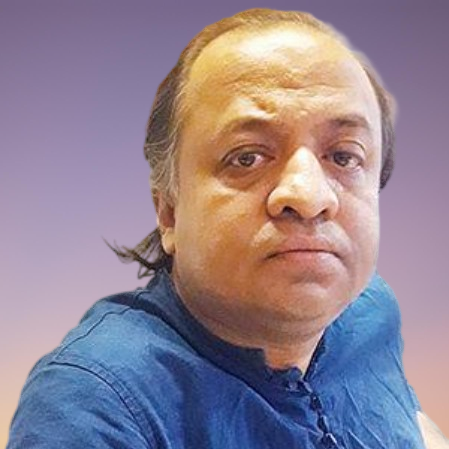Culture

The painter’s 88th birth anniversary
Rashid was the pioneer of tapestry in this country and definitely the finest artist of this particular genre to date. He successfully introduced tapestry in various forms. His works are unparalleled in their subjects and style. Blending of our tradition with modern western art is the main characteristics of his works. His forte was to search for fresh themes and present them with a novel approach. The artist established his uniqueness - particularly in terms of design and colour composition. The thickness of colours, geometric compositions and aestheticism distinguish his works. This style helped him to hold his position at the forefront of the Bangladeshi art scenario.
Born in the village of Haroa, under Faridpur district, Rashid completed his five-year course in fine arts from the Dacca Art College (now Faculty of Fine Arts, University of Dhaka) in 1954 and attended a teachers' training certificate course at Asutosh Museum of the Calcutta University. He did his post-graduate studies under a Spanish government scholarship, and studied sculpture at the Central Escula des Bellias Artes de San Fernando in Madrid from 1956 to '57. He also studied sculpture, fresco and tapestry at the Academy of Jullian and Beaux Arts in Paris from 1960 to '64.
In his artworks, the artist used azure, white, black, crimson, green, brown and more. He was deeply inspired by varied organic forms, like vegetation, flowers and plants. Rashid made a great attempt to present synchronisation of colours in his works. He used colours with vivid splendour to give a distinct message through his works, which for many years impressed art aficionados both at home and abroad.
Rashid Chowdhury also wrote poems and did some translations from the French. During the 1960s, along with some 'angry young men'-poets, engineers and architects, he founded a group called Na (No) which published a literary little magazine. From 1969, he became involved in organising the post-graduate Department of Fine Arts at the University of Chittagong. He was planning to create an artists' campus at Sonargaon (near Dhaka) and a tapestry village at Xreepur, but died before these could be completed.
Rashid received the first prize for fresco painting in Beaux Arts in Paris and first prize in RCD Biennale in Tehran. He also received Ekushey Padak and the Bangladesh Shilpakala Academy Award. The artist died in 1986.
April 1 marked the 88th birth anniversary of Rashid Chowdhury.

























Leave a Comment
Recent Posts
Right On Schedule
The most eagerly anticipated, and frankly hyped up, announcement of an ...
Fighting raged along the borde ...
Fighting raged along the border of Cambodia and Thailand, with explosi ...
ICIMOD drives regional cooperation to inspire new mo ..
The Cage of Captivity and the Cry for Freedom: A Cru ..
Why Japan issued an advisory for a possible megaquak ..
The Autocrats’ War on Universities